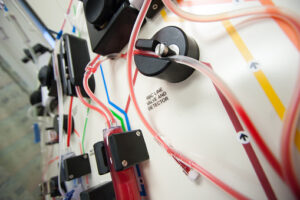Hyperleukocytosis (a white blood cell count greater than 100 X 109/L) is a medical emergency with a mortality rate up to 50% in patients with acute myeloid leukemia (AML) due to leukostasis causing ischemic damage. Hydroxyurea, chemotherapy, and leukapheresis have been utilized alone and in combination to lower the leukocyte count. The ideal treatment regimen, however, has not been identified, and randomized clinical trials are extremely difficult due to the lack of exact diagnostic criteria and the emergency nature of this disease. In order to determine if leukapheresis lowers risk of early mortality, Bewersdorf et al. performed a systematic review and meta-analysis, which included 13 observational studies with 486 leukaphersis and 1257 nonleukapheresis patients with AML and hyperleukocytosis. Leukapheresis was associated with decreased risk for early mortality in patients with AML and hyperleukocytosis (pooled relative risk, 0.88; [95% C.I., 0.69-1.13]; p=0.321), but the association was not statistically significant. These data support the guidelines from the American Society for Apheresis and the British Committee for Standards in Haematology, which preference early initiation of chemotherapy and hydroxyurea to leukapheresis for patients with AML presenting with hyperleukocytosis.
References:
- Bewersdorf JP, Giri S, Tallman MS, Zeidan AM, and M Stahl. Leukapheresis for the management of hyperleukocytosis in acute myeloid leukemia—A systematic review and meta-analysis. Transfusion 2020
- Connelly-Smith L and ML Lineberger. Leukocytapheresis for AML hyperleukocytosis: Failing to make the grade. Transfusion 2020

